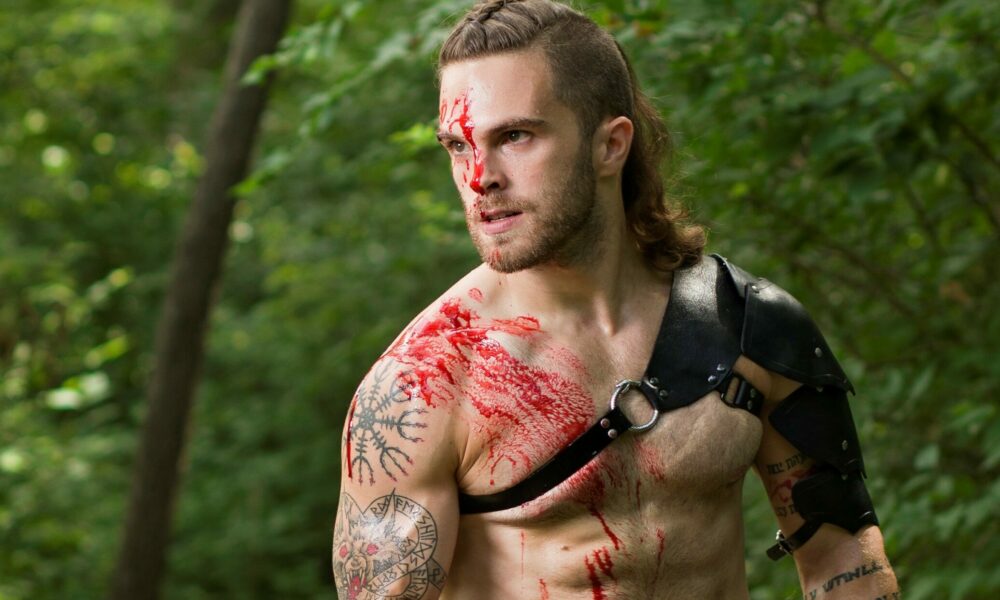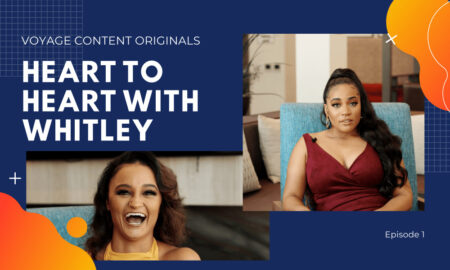

Today we’d like to introduce you to David Miller.
Hi David, we’d love for you to start by introducing yourself.
I started working in stage combat professionally in 2010, but I have been training and working on my videos and fights as far back as 2000. I started with Tae Kwon Do at 9 and moved into various other mixed unarmed martial arts; I also started fencing at around 14. From there, I started making small videos in my backyard with my friends and was one of the very early posters on Youtube when it first came out. When I started this, there were no resources for stage combat, stunts, or anything like it in Kansas. I remember often wanting to make and do this work and having people tell me that’s not the sort of thing we do here. In film school, people were more interested in surreal art projects and thought my videos about hitting people with swords were childish. I started working at the renaissance festival at around 16 and moved around the festival doing different combat-related jobs until I got to do my first fight show in 2010. It was the main fight in the Human Combat Chess Match. It was the first time I had worked with others who did stage combat as a job, and on a much more organized level than I had been doing it.
This was when I met my first Fight Mentor. He picked me to be the main fight because of my fencing abilities, and I practiced hard and performed well in the show. I thought this meant I was ready to make my stage show, and I went to him and told him as much, and he said to me that that was a terrible idea. He told me I didn’t have enough experience, had no real training, and didn’t understand stage combat safety. I went away sad that day, but the next day I came back and asked him, “where can I get the experience?” He told me that was the first time someone had asked him that question. He turned me towards the Society of American Fight Directors, the world’s most well-respected Stage Combat teaching organization. That following summer, I was on a plane towards North Carolina for the National Stage Combat Workshop, a 3-week stage combat-intensive. It was anything but easy. I had little acting experience and was thrust into a world of actors and acting terminology, but again, I put my nose to the grindstone and worked. I learned a lot about combat and greatly improved my performance skills.
When I got back, I was a lot more knowledgeable, but I still didn’t have anyone interested in doing this work with me. No stage combat was being taught there, and no one outside of the renaissance festival was doing any of this work. I once again had to make my films and train my actors to fight with me. And since training in the area was non-existent, I had to go back to the National Stage Combat Workshop the next year to train in 3 more of the SAFD’s 8 weapons disciplines. The same thing continued for the following number of years. I would make my films, train on my own, teach other people and run small workshops. I returned to the NSCW one more time to get my remaining 2 weapons. I had hit a plateau. There was nothing else I could learn on my own, and no one in Kansas could teach me anything. So I decided to go to a Graduate School in Louisiana to train under a Fight Master in the SAFD. Masters school was a grind. I have pronounced Dyslexia and some other learning disabilities that do writing and reading difficult, and as you can imagine, there is a lot of that in grad school. The combat was what got me through. I dived head first into doing as much as possible with stage combat, but even here, in a school that attracts so many like-minded stage combat enthusiasts, I still could not find people who wanted to create the films and fight scenes I was interested in. They couldn’t take the time to execute the things that we were learning outside of our regular school projects.
I finished my Masters’s school and joined a stunt show. It was a fairly unpleasant experience. Working under a director who wanted things done his way, performing someone else’s fights, and feeling under-utilized, I decided to leave. I returned to Kansas and tried to start some fight projects but still was not getting much of a bite. I continued to make small films, teach workshops, and eventually some classes at Johnson County Community College while biding my time. In my absence, it seemed that some more people interested in stage combat had begun to do things in the area, but they were fairly self-contained and were doing work that didn’t fit my vision. When a covid hit and all other opportunities dried up overnight, I decided to make a move. I started a youtube and Tiktok channel and started making tutorials. I started teaching local classes and had some of my students make short fights and films with me, and it began to take off. I started to see success on our TikTok with our short fight videos and then started to see our youtube grow as well. I expanded the scope of our content to include higher production value films. I made the Choreography more complex, and we rehearsed for longer.
During this growth, I achieved a 10-year goal and became a Certified Teacher with the SAFD. A very high rank in the organization. And now, I am currently in the process of transitioning to full-time content creator and Fight Director.
We all face challenges, but looking back, would you describe it as a relatively smooth road?
This has been a challenging journey. Over the years, I have had some amazing people to learn from, but my access to them was limited. There were no resources for stage combat when I started my journey. If I wanted to learn something, I had to seek it out or figure it out myself. When it came to creating art, it was always up to me to make things happen. If I wanted something done, I had to do it. So I learned to film, I learned to edit, I learned to choreograph, I learned to fight, I learned how to write, and I learned how to navigate social media. The artistic community didn’t welcome me. I do things my way and am not a social animal. So while schmoozing or networking could probably have helped out, it wasn’t on the card for me. Most of the fighters I work with were my students first. While some came to this work with previous movement or martial arts experience, many were entirely new to Stage Combat. There have also been a fair number of people who told me that what I was doing wouldn’t work. People doubted me because I didn’t run in the right circle. People who have discounted my choice to mainly pursuing my work online instead of in theaters or traditional film sets.
Alright, so let’s switch gears a bit and talk business. What should we know about your work?
I make Fights. I teach stage combat, Stunt work, Swordsmanship, and Martial arts. I also Choreograph and perform fights on stage and screen. I strive for a blend of real martial truth and entertaining cinematic action; after watching years of bad action scenes, I devised some rules for our films.
Long shots: Try to cut a few times as you can; we want to see the actors doing the fight.
No shaky cam: Always use smooth camera work to ensure we can see what’s going on. Never speed up footage.
Wide angles: Always show as much of the actor as possible. We want to see the cool fight!
I am proud that without using any of these action shortcuts, we can make fight scenes that rival and surpass many big-budget movies.
What was your favorite childhood memory?
I always liked dressing up in costumes and playing with wooden swords or sticks. My mom says I was born with a stake in my hand.
Contact Info:
- Instagram: https://www.instagram.com/sellsword.arts/?hl=en
- Facebook: https://www.facebook.com/sellswordarts
- Youtube: https://www.youtube.com/c/SellswordArts

Image Credits
Zaftig Unicorn Photography












